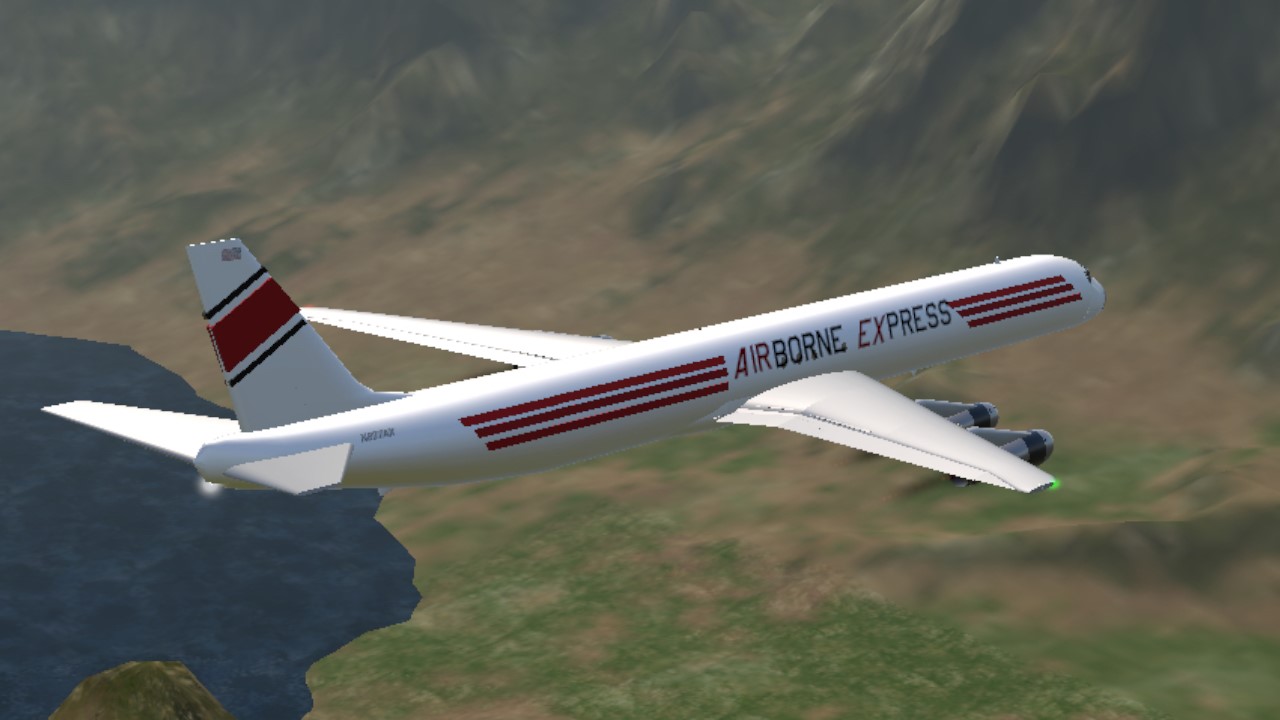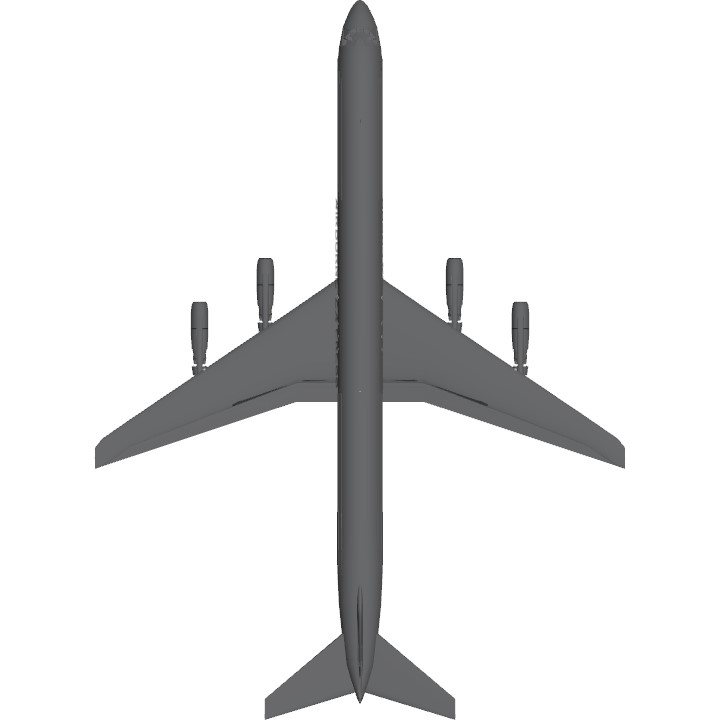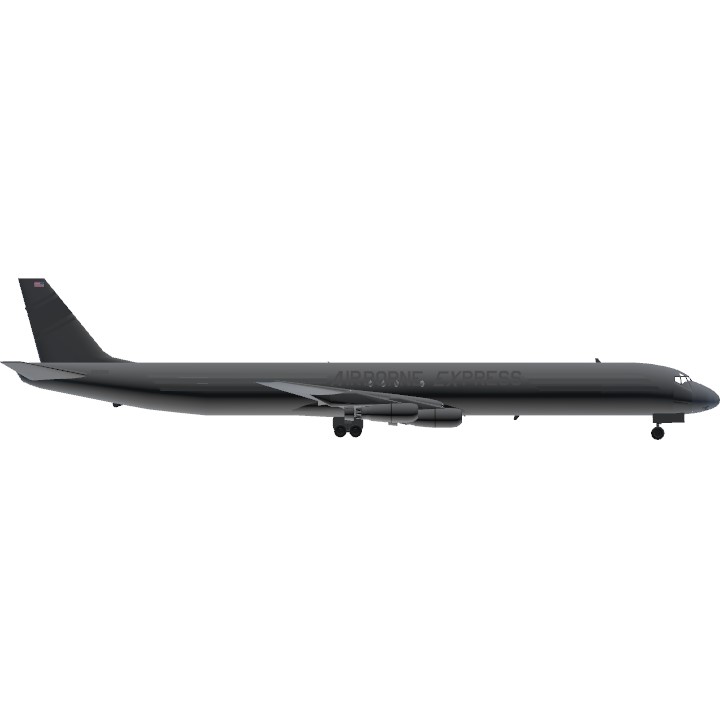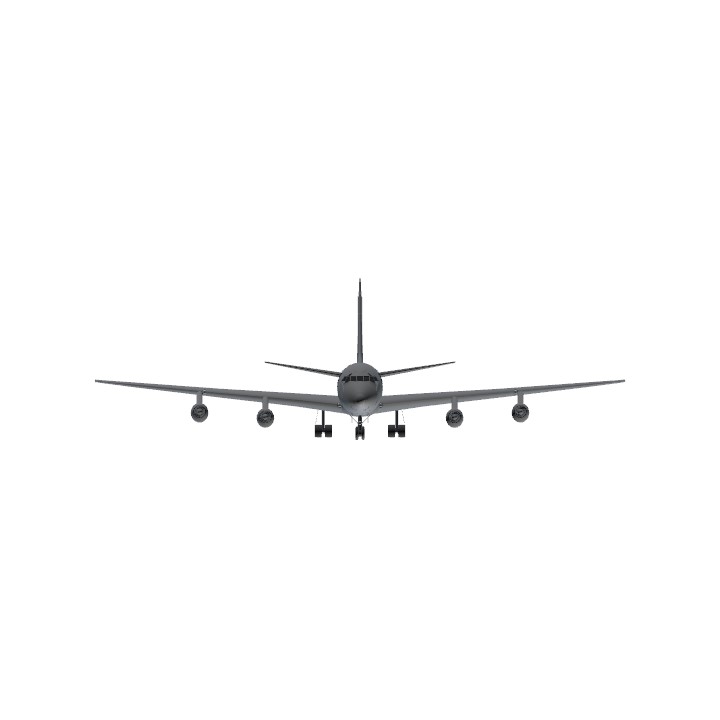About Airborne express flight 827:
Initially, Flight 827 had been scheduled to depart from Piedmont Triad International Airport on December 16, but was delayed due to maintenance. An attempt on December 21, (operated by the same crew) was cut short due to a hydraulic problem. Flight 827 finally departed at 17:40 Eastern Standard Time (EST) at nighttime on December 22, 1996, after being delayed due to additional maintenance. The flight climbed to 9,000 feet (2,700 m) and then to 14,000 feet (4,300 m).[2]:?1–2?
Flight 827 was operating under instrument flight rules (IFR). After departing Greensboro, the aircraft was to fly northwest over New River Valley Airport's VOR, in Pulaski County, Virginia, then to Beckley, West Virginia, followed by other way points in Kentucky and Virginia, and then return to Greensboro. The flight was expected to last two hours.[2]:?2?
Shortly after reaching 14,000 feet (4,300 m), the aircraft experienced atmospheric icing, which was indicated when the cockpit voice recorder (CVR) recorded captain Lemming saying, "we're gettin' a little bit of ice here," and "probably get out of this," at 17:48:34 and 17:48:37 respectively.[2]:?2?
Several landing gear, hydraulic, and engine tests were performed without incident. At 18:05, flight engineer Waelti said, "next thing is our stall series." The next item was a clean stall maneuver test. The crew would slow the aircraft down until the stick shaker activated, record the stall speed and that of the stick shaker activation, and then recover control of the aircraft. In other words, the flight crew would deliberately stall the aircraft.[10] Captain Avery stated that the crew would stop trimming the aircraft at 184 knots (212 mph; 341 km/h) and that the stall speed (VS) was 122 knots (140 mph; 226 km/h). Flight engineer Waelti stated that the stick shaker would activate at 128 knots (147 mph; 237 km/h), which was 6 knots (6.9 mph; 11 km/h) higher than the calculated stall speed. The flight crew began gradually slowing the aircraft down by 1 knot (1.2 mph; 1.9 km/h) per second.[2]:?2?
At 18:07, engine power was increased. One minute later at 18:08, a buffeting sensation was experienced at 149 knots (171 mph; 276 km/h).[2]:?12? The following was recorded on the CVR:[11]
18:07:55 Commentary Sound similar to engine increasing in RPM.
18:08:06 Captain Lemming Some buffet.[a]
18:08:07 Captain Avery Yeah. That's pretty early. *.[b]
18:08:09 Commentary Sound of rattling.
18:08:11 Flight Engineer Waelti That's a stall right there… * ain't no [stick] shaker.
At this time, according to the flight data recorder (FDR), the aircraft was at 145 knots (167 mph; 269 km/h).[2]:?3? However, the stick shaker had failed to activate.[2]:?36? The speed then decreased to 126 knots (145 mph; 233 km/h) and the aircraft entered a real stall.[2]:?11? At 18:08:13, captain Lemming decided to terminate the test, called "set max power," and applied full engine power in an attempt to recover from the stall.[2]:?36? Although all four engines started to accelerate, engine no. 2 accelerated more slowly.[2]:?11?[11] This engine subsequently experienced a compressor stall.[2]:?12,?95? Ground witnesses also noted that the aircraft was making "skipping or missing" sounds.[2]:?3? At 18:09, Air Traffic Control (ATC) asked the flight if they had initiated an emergency descent, with captain Avery replying, "yes sir." This was the last communication (and only distress call) from Flight 827.[2]:?3?
At 18:09:35, the ground proximity warning system (GPWS) activated and sounded "terrain terrain, whoop whoop pull up." Three seconds later at 18:09:38, the aircraft crashed into a mountain travelling over 240 knots (280 mph; 440 km/h) in a nose-down wings-down position of 26 and 52 degrees, respectively. The crash site elevation was 3,400 feet (1,000 m) mean sea level (MSL).[2]:?3,?12? The aircraft exploded on impact.[12] All six people on board were killed and the aircraft was destroyed.[2]:?3–4?[3]
Investigation:
The National Transportation Safety Board (NTSB) launched an investigation into the accident and arrived at the crash site the same day.[2]:?55? Both flight recorders were recovered the next morning.[2]:?55?[13][14] Rescue teams also recovered all six bodies.[15] Efforts to reach the accident site were initially hampered due to its remote location.[16]
The aircraft's flight controls were destroyed in the crash, but the NTSB recovered two trim jackscrews from the horizontal stabilizer.
The NTSB recreated the stall in a simulator. In the simulation, the stick shaker activated at 144 knots (166 mph; 267 km/h). Despite deepening the stall, no unexpected nose-down pitches or lateral rolls occurred in the simulator. The decreasing airspeed caused the nose to pitch up.[2]:?14?
In 1991, another Airborne Express DC-8 entered a real stall during an FEF, but the flight crew was able to recover and test continued with no further incidents. In the 1991 incident, the stick-shaker activated the same time the buffeting sensation occurred. The Federal Aviation Administration (FAA) issued a revised stall recovery procedure to Airborne Express, which they agreed to incorporate. However, the airline had only partially incorporated the procedure at the time of the Flight 827 accident.[2]:?21?[10]
Airborne Express' flight operation manual contained only a short section labeled "Test Flights" and the requirements for FEF's read:
...night test flights may be conducted only when the reported ceiling is 800 feet or above and the reported visibility is 2 miles or greater, and the weather forecast indicates that the ceiling and visibility will remain at or above those limits for the duration of the flight. Night test flights flown by flight supervisory personnel may be operated with lower minimums when circumstances warrant.[2]:?22?
—?Airborne Express, Flight Operations Manual
At the time of the accident, there were scattered showers of light rain and the cloud ceiling was between 14,000 feet (4,300 m) and 15,000 feet (4,600 m). The reported surface weather at Mercer County Airport in Bluefield stated that visibility was two miles.[2]:?10?
Because of the aircraft experiencing icing, it experienced a buffet 12 knots (14 mph; 22 km/h) before the stall speed. The FDR indicated that the aircraft had entered a real stall at 126 knots (145 mph; 233 km/h), four knots before the stall speed. The NTSB concluding that the icing, regardless of amount, (along with flight control rigging) did not contribute to the accident.[2]:?32–34?
Despite Captain Lemming's timely decision to terminate the stall test, he subsequently pulled back on the control column from five to ten degrees, allowing the aircraft to enter a real stall.[2]:?32? The NTSB notes that he likely did this in an attempt to establish an appropriate pitch attitude and power setting.[2]:?32?
Captain Avery did not notice the incorrect flight control inputs made by captain Lemming, though he did attempt to instruct Lemming on to recover the airplane from the roll, but not how to recover from the stall. In addition he did not enhance his instructions or take over control of the aircraft himself. The NTSB noted that since both pilots were captains, had manager positions at the airline, and had similar backgrounds, they would have difficulty challenging each other because of a lack of command authority.[2]:?35? Captain Avery, as PIC, should have monitored and challenged captain Lemming's actions, but his both his PIC and instructional roles were informal on the accident flight.[2]:?35–36?
According to both flight recorders and the recovered horizontal stabilizer trim jackscrew, captain Lemming had trimmed the aircraft's horizontal stabilizer at 175 knots (201 mph; 324 km/h) instead of the intended 184 knots (212 mph; 341 km/h). Airborne Express' procedures required the aircraft to be trimmed 1.5 knots (1.7 mph; 2.8 km/h) before the stall speed. Despite the incorrect trim setting, the aircraft would still have been recoverable from the stall. The NTSB concluded that the captain Lemming's incorrect trimming of the horizontal stabilizer was not a factor in the accident.[2]:?34?
The NTSB examined N827AX's maintenance records and reviewed Airborne Express' procedures for testing the stall warning system, but could not determine why the stick shaker was inoperative during the accident flight.[2]:?36–37? In addition, the flight crew's situational awareness that the aircraft was in a stall was short, as they were distracted by the compressor stall on the no. 2 engine and communications with ATC. The NTSB also stated that an angle of attack display on the flight deck could have helped the crew situational awareness. The fact that the crew lacked a visual horizon at nighttime was another factor due to the aircraft being in instrument meteorological conditions (IMC) from the time the stall maneuver was performed until impact.[2]:?36–39?
Neither captain Avery nor captain Lemming had ever flown a DC-8 post modification on an FEF until December 21 (the initial FEF that was aborted), though the director of flight technical programs authorized Avery to serve as a pilot in command on post modification FEF's
Final report:
The NTSB released the final report on July 15, 1997. The "probable cause" section stated the following:
The National Transportation Safety Board determines that the probable causes of this accident were the inappropriate control inputs applied by the flying pilot during a stall recovery attempt, the failure of the nonflying pilot-in-command to recognize, address, and correct these inappropriate control inputs, and the failure of ABX to establish a formal functional evaluation flight program that included adequate program guidelines, requirements and pilot training for performance of these flights. Contributing to the causes of the accident were the inoperative stick shaker stall warning system and the ABX DC-8 flight training simulator's inadequate fidelity in reproducing the airplane's stall characteristics.[2]:?v,?51?
—?National Transportation Safety Board
The accident had been caused by pilot error due to captain Lemming's improper flight control inputs and captain Avery's failure to notice them. Another cause was Airborne Express failing to set up a proper program for FEFs, resulting in inadequate training.[17][18][19] Contributing factors included the stick shaker being inoperative, inaccuracies in Airborne Express' flight simulators when simulating a stall, the compressor stall on the no. 2 engine which distracted the flight crew, the accident occurring at night (which resulted in the flight crew's lack of a visual horizon and other exterior cues), and Airborne Express not requiring flight tests to be completed before nightfall.[2]:?49–50?[10][20] Airborne Express agreed with the NTSB that the pilots used incorrect procedures, but disputed two other findings, citing that Avery did have prior experience controlling a DC-8 during a stall, and stated that the revised stall procedures were fully implemented at the time of the accident
Specifications
General Characteristics
- Predecessor Kalitta Air/American International Airlines Douglas DC-8-61(F) [Flight 808]
- Created On iOS
- Wingspan 143.3ft (43.7m)
- Length 194.5ft (59.3m)
- Height 44.2ft (13.5m)
- Empty Weight 160,650lbs (72,870kg)
- Loaded Weight 197,549lbs (89,607kg)
Performance
- Power/Weight Ratio 1.337
- Wing Loading 57.9lbs/ft2 (282.6kg/m2)
- Wing Area 3,413.1ft2 (317.1m2)
- Drag Points 27146
Parts
- Number of Parts 527
- Control Surfaces 9
- Performance Cost 3,213





@AeroflotBilibili you’re getting ready for ACI season 25.